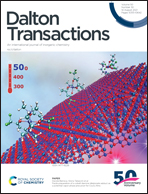Non-noble MNP@MOF materials: synthesis and applications in heterogeneous catalysis
Abstract
Transition metals have a long history in heterogeneous catalysis. Noble or precious transition metals have been widely used in this field. The advantage of noble and precious metals is obvious in ‘heterogeneous catalysis’. However, the choice of Earth abundant metals is a sustainable alternative due to their abundance and low cost. Preparing these metals in the nanoscale dimension increases their surface area which also increases the catalytic reactions of these materials. Nevertheless, metals are unstable in the nanoparticle form and tend to form aggregates which restrict their applications. Loading metal nanoparticles (MNPs) into highly porous materials is among the many alternatives for combating the unstable nature of the active species. Among porous materials, highly crystalline metal–organic frameworks (MOFs), which are an assembly of metal ions/clusters with organic ligands, are the best candidate. MOFs, on their own, possess catalytic activity derived from the linkers and metal ions or clusters. The catalytic properties of both non-noble metal nanoparticles (MNPs) and MOFs can be improved by loading non-noble MNPs in MOFs yielding MNP@MOF composites with a variety of potential applications, given the synergy and based on the nature of the MNP and MOF. Here, we discussed the synthesis of MNP@MOF materials and the applications of non-noble MNP@MOF materials in heterogeneous catalysis.

- This article is part of the themed collection: 2021 Frontier and Perspective articles


 Please wait while we load your content...
Please wait while we load your content...